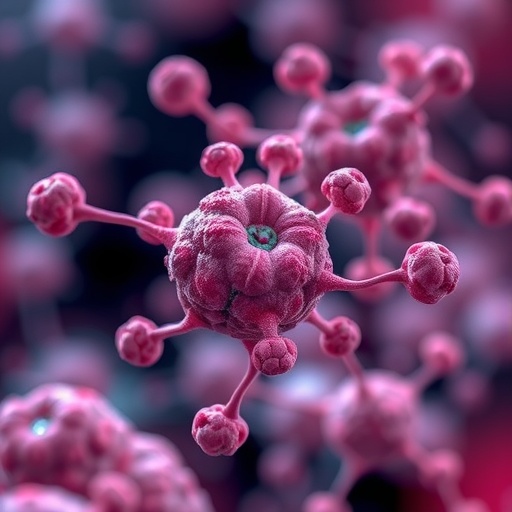In the evolving landscape of infectious diseases, the emergence of multi-drug resistant bacteria has become a significant concern for global health. Among these bacteria, Acinetobacter baumannii has established itself as a formidable pathogen, associated with severe infections, particularly in hospital settings. This notorious bacterium is known for its ability to resist multiple antibiotic classes, making the demand for innovative therapeutic strategies critical. Recent research has turned the spotlight on the histidine biosynthesis pathway as a potential target for novel antimicrobial agents.
Histidine, an essential amino acid, plays a pivotal role in various physiological processes within bacteria. The pathway responsible for its biosynthesis, particularly ATP-phosphoribosyltransferase, has garnered attention due to its essentiality for bacterial growth and survival. This enzyme catalyzes the first committed step in the synthesis of histidine, and its inhibition could curtail the growth of A. baumannii, providing an avenue for therapeutic intervention.
The study led by Singh, Tanwar, and Singh explores this biochemical avenue, employing a structure-based drug design approach to identify natural inhibitors targeting ATP-phosphoribosyltransferase. By understanding the three-dimensional structure of this enzyme, the researchers utilized computational methods to screen a library of compounds, looking for those that could effectively bind and inhibit its function.
The innovation in their approach lies not only in the identification of potential inhibitors but also in harnessing compounds derived from natural sources. Natural products have historically provided a wealth of pharmacologically active compounds, yet underexplored in the context of bacterial histidine biosynthesis. This study represents a paradigm shift, suggesting that the treasure trove of natural biodiversity can still yield potent therapeutics against resistant pathogens.
The discovery of novel inhibitors offers a dual benefit; it not only acts directly on A. baumannii but could also inspire synthetic derivatives with improved potency and selectivity. Importantly, the research emphasizes the urgency of finding new drug targets amidst rising antibiotic resistance. By inhibiting the histidine biosynthesis pathway, the researchers could pave the way for effective treatments that disrupt fundamental metabolic processes critical for bacterial survival.
The implications of this research extend beyond mere laboratory findings; they echo in the corridors of healthcare systems worldwide challenged by Acinetobacter infections. As strains resistant to last-resort antibiotics continue to rise, the potential application of novel inhibitors could restore efficacy to treatments that have been sidelined due to resistance. The promise of an expanded arsenal of therapeutic strategies could significantly impact patient outcomes, particularly in critical care environments.
Moreover, while the current focus is on A. baumannii, the broader implications of targeting histidine biosynthesis may provide insights into tackling other resistant pathogens. The approach taken in this study can be tailored to identify inhibitors against similar enzymes in various species, thereby offering a blueprint for a more comprehensive battle against antibiotic resistance.
As the researchers advance their findings, collaborative efforts will be crucial. Engagement with industry partners and healthcare institutions could facilitate the transition from laboratory discovery to clinical application. Furthermore, the path forward must encompass rigorous testing for efficacy and safety in human subjects to ensure that these natural inhibitors translate into viable treatment options.
The study’s findings exemplify the intersection of biological research and computational modeling, showcasing the power of interdisciplinary collaboration. With biochemistry, pharmacology, and bioinformatics converging, this path of discovery emphasizes the need for a multifaceted approach in drug development.
In tandem with the scientific exploration of natural inhibitors, the public health community can play a pivotal role in fostering awareness about antibiotic resistance. Education on responsible antibiotic use, combined with innovative research, creates a comprehensive strategy to mitigate the threat posed by multi-drug resistant organisms.
In summary, the pioneering research conducted by Singh, Tanwar, and Singh presents a crucial advancement in the fight against Acinetobacter baumannii. Through the discovery of natural inhibitors of ATP-phosphoribosyltransferase, they have illuminated a pathway for future therapeutic options that could significantly alter the landscape of infectious disease treatment.
As we look toward the future, continued exploration into the histidine biosynthesis pathway could unlock further secrets of microbial metabolism, leading to the next generation of antibiotics in our struggle against resistant bacterial pathogens. The significance of this work cannot be understated; it stands as a testament to human ingenuity in combating one of today’s most pressing health challenges.
Subject of Research: Histidine biosynthesis in Acinetobacter baumannii
Article Title: Targeting histidine biosynthesis in Acinetobacter baumannii: structure-based discovery of natural inhibitors of ATP-phosphoribosyltransferase
Article References: Singh, A., Tanwar, M., Singh, T.P. et al. Targeting histidine biosynthesis in Acinetobacter baumannii: structure-based discovery of natural inhibitors of ATP-phosphoribosyltransferase. Mol Divers (2025). https://doi.org/10.1007/s11030-025-11409-x
Image Credits: AI Generated
DOI: https://doi.org/10.1007/s11030-025-11409-x
Keywords: Acinetobacter baumannii, histidine biosynthesis, antibiotic resistance, ATP-phosphoribosyltransferase, natural inhibitors, drug discovery, structure-based design.




